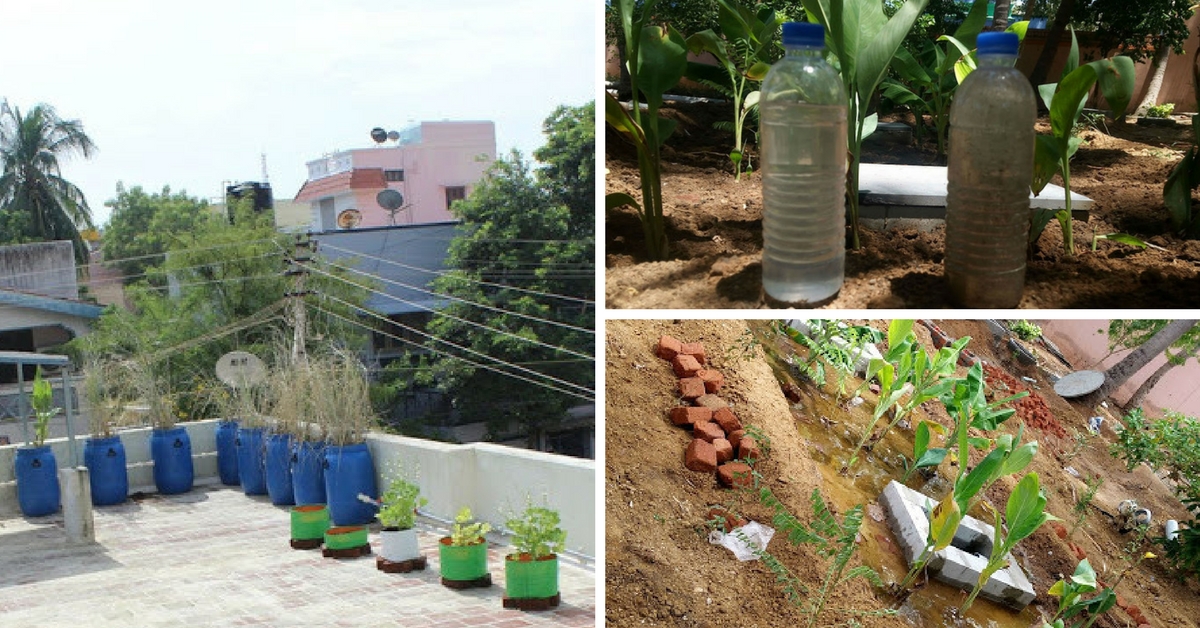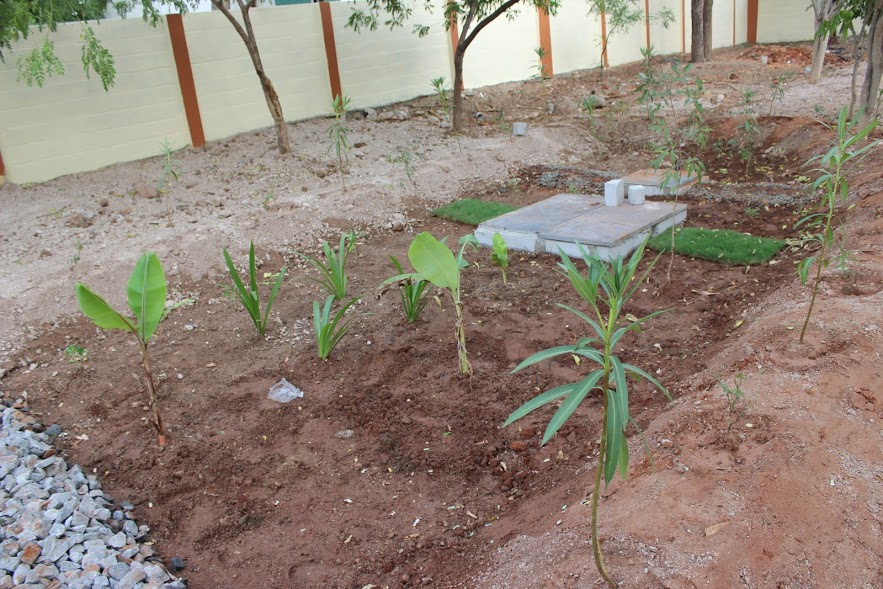How to Purify & Recycle Wastewater From Your Home While Also Creating a Beautiful Garden!
While sewage treatment plants are being set up in many buildings, one can also take a botanical approach to reusing greywater.

Human beings are recommended to drink 8-10 glasses of water every day. But our consumption of water isn’t limited simply to drinking it. Take a minute to observe your household. Washing clothes and utensils, mopping dishes, bathing — mundane tasks like these contribute to around 60% of the wastewater generated from households each day. Contrary to popular opinion, only some of this waste is unusable; the rest, known as greywater, can be efficiently recycled and reused.
Greywater refers specifically to the relatively clean wastewater that is generated from baths and sinks, washing machines and kitchen appliances.
 Greywater can be purified through artificial reed beds in urban areas. Source: RainStock
Greywater can be purified through artificial reed beds in urban areas. Source: RainStock
Also known as sullage, greywater comprises most of the wastewater produced by households on an everyday basis. However, it does not include sewage and wastewater from toilets, which fall under the category of black water.
Greywater can be cleaned and utilised further for a variety of domestic use, says K. Sakthivel, founder and CEO of Rainstock, a Madurai-based water management firm specialising in rainwater harvesting and greywater recycling methods.
“Greywater can be cleaned and used for washing floors, cars and in some cases, even laundry,” he suggests. “However, we don’t recommend it for bathing, as even purified greywater will contain some amount of contaminants.”
While sewage treatment plants (STP) are being set up in many apartment buildings to put such wastewater to use, one can also take the botanical approach to reusing the water.
You might also like: 5 Clever Ways You Can Use the Waste Water Generated by RO Purifiers in Your Daily Life
Rainstock’s approach emphasizes on natural means of purification, having installed reed beed systems for residential buildings as well as hostels and offices. Sakthi draws attention to rivers, whose soil and reed beds have filtered flowing water over centuries. He says, “Traditionally, water from our houses would pass through soil planted with banana and coconut trees before making their way to ground wells.”
Drawing from natural filtration system of rivers, the team uses a combination of anaerobic baffled reactor (an improved septic tank) and reed bed systems for purification. Once cleaned, the water is stored in wells, tanks or even artificial pools, for further use. “We realised that space is an issue today, so we have devised a way to use a pump and transmit the water into drums placed on terraces,” Sakthi adds.
Water management expert Indukanth S Ragade set up a botanical treatment process for cleaning greywater and channeling it into gardens way back in the 1990s.
 Prepping a soil bed. Source: RainStock
Prepping a soil bed. Source: RainStock
In his book Self-Reliance in Water: A Practical Manual for City and Town Dwellers, he has laid out the method for readers to replicate at home. According to the author, a 2.5 sq ft. soil bed would be appropriate for treating about 50-60 litres of greywater. With some help from an experienced plumber and a few PVC gullies or elbows, the water can be diverted to these soil patches, but a simpler methods involved rigging up a plastic mug and garden hose to create a portable piping system.
Here’s a step-by-step guide to the mug-and-hose process, as given in the book:
• Using a divider, draw a precise circle midway on the side of the mug
• The circle on the mug must be identical in size to the diameter of the garden hose
• Now, drill a hole on the mug, making sure to stay within the margins of the circle
• You can drill the hole using a poker or a screwdriver heated on a gas burner flame
• Once you have made the holes, use a knife to remove the circular disk
• Insert the garden hose into the hole
• Keep the mug below the greywater pipe and the end of the hose on the soil bed
The organic content of the soil bed will help to purify the water, before it makes its way into the connected storage units. The treatment plant works by itself but do keep an eye on whether the waste water may be stagnating on parts of the soil bed.
Flowering plants like canna indica and ginger lily or fruit-bearing trees like banana and colocasia are ideal for such a project.
 Canna indica can make for a beautiful reed bed garden. Source: Wikipedia
Canna indica can make for a beautiful reed bed garden. Source: Wikipedia
Sakthi particularly recommends the canna indica to be grown on reed beds, which help to remove toxicity in the water. Flowering plants are also visually appealing, and can transform even a small area into a lush garden. Plants that grow in water, marshlands or can withstand the heavy volume of water are best suited for this method.
You might also like: This Low-Cost Technology Is Helping a Puducherry Village Treat Its Wastewater, and It Uses Plants!
If you don’t have a sewage treatment plant in your complex, unused patches of land in and around apartment buildings can be used to build reed/soil beds and divert greywater towards them. This is also a great way to bring the community together in an eco-friendly initiative.
The clean water, when used for daily tasks, can contribute significantly in bringing down the amount of wastewater generated by households.
For more details on treating and reusing greywater at home, read Indukanth S Ragade’s book. To contact Sakthi of Rainstock, click here.
Like this story? Or have something to share? Write to us: [email protected], or connect with us on Facebook and Twitter.
NEW: Click here to get positive news on WhatsApp!
This story made me
- 97
- 121
- 89
- 167
Tell Us More
We bring stories straight from the heart of India, to inspire millions and create a wave of impact. Our positive movement is growing bigger everyday, and we would love for you to join it.
Please contribute whatever you can, every little penny helps our team in bringing you more stories that support dreams and spread hope.



















